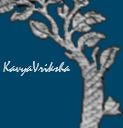The Suladi Sapta Talas in Carnatic Music
Talas have evolved over the ages just like ragas and composition genres (prabhanda, suladi, kriti).
When we start learning Carnatic music, the first set of solfa swara exercises called Sarali, Janta and Dhatu Varisai are all taught in Adi Tala. We only learn about its formal name, Chatusra Jathi Triputa Tala, later when we start learning Alankarams. These Alankarams are taught in seven different talas called Suladi Sapta Talas.
Shri S R Janakiraman gives us a succinct history of Talas in his article, Rhythms and Talas Suitable for different Musical Compositions :
“Suladi sapta talas are much later in origin. The more complicated angas guru, plutas, kakapada figure in the ancient lists of talas were left out in the suladi sapta talas. It is only in the suladi sapta talas that the laghu has variable duration in accordance with its Jathi. In earlier periods the laghu was only Chatusrajati. The suladi sapta talas could be traced to the 15th & 16th centuries A.D. In Purandaradasa’s suladis, suladi sapta talas are employed. Hence the name.”[2]
In her thesis Development of Kriti in carnatic music, Smt Manjula Sriram shares additional historical background on the emergence and evolution of Suladis and their underlying talas :
· “Suladis — the modified prabandhas of the medieval period
· This is the musical form which reveals Purandaradasa’s marvelous mastery over the technique of music.
· The word Suladi occurs in Purandaradasa’s composition ‘Vasudevana namavaliya, in the line Suḷādi aravattunālkusāvira bahutara nāmā (reference to composing 64,000 songs!)
· The term suladi itself emerged from suda, which became Sula, and is derived from the root *Sul* meaning to sound and to occur in predetermined manner; this indicates that all these songs were rendered in a set sequence to the seven specific suladi talas.
· The Suladis, formed a distinct group of special compositions that were sung in a prescribed manner to Desi talas. This conventional prescription and practice with regard to talas became so rigid in course of time that eventually they came to be named Suladi or Sudadi talas again, seven in number, called Dhruva, Matya, Roopaka, Jhampa, Triputa, Ata and Eka. “[1]
As detailed in Components of a Tala,
“Anudrutam (1 time unit, denoted by U), Drutam (2 time units, denoted by 0) and Laghu are the components of these talas.
Laghu has 5 variations or Jathis Tisra(3), Chatusra(4), Khanda(5), Mishra(7) and Sankeerna(9). Laghu is denoted by the letter l and the subscript indicates the number of time units.
Kriya refers to the action unit in tala. These were classified basically into two groups, sounded (saśabda kriya (sk)) and soundless (niḥśabda kriya(nk))”[7,5]
Here is the list of the Suladi Sapta Talas and their angas(components)
1. Dhruva tala: Comprises a laghu, a drutam followed by two more laghus. In the Alankarams, we learn Chatusra Jathi Dhruva Talam l4 O l4 l4
2. Matya tala: Consists of a laghu, a drutam followed by another laghu. In the Alankarams, we learn Chatusra Jathi Matya Talam l4 0 l4
3. Roopaka tala: Consists of a drutam followed by a laghu. In the Alankaram, we learn Chatusra Jathi Roopaka talam, 0 l4
4. Jhampa tala: Comprises a laghu followed by an anudrutam and a drutam; in the Alankarams, we learn Mishra Jathi Jhampa Talam l7 U 0
5. Triputa tala: Consists of a laghu followed by two drutams; in the Alankarams, we learn Tisra Jathi Triputa Talam l3 0 0
6. Ata tala: Consists of two laghus followed by two drutams; in Alankarams, we learn we learn Khanda Jathi Ata Talam l5 l5 0 0
7. Eka tala: Consists of just a laghu; in Alankarams we learn chatusra eka l4
Sequence of the Talas(and Jathis)
Shri Muthuswami Dikshitar has composed many kritis in the various suladi talas.
One particular set of kritis is “the 7 vaara(weekly) kritis set to the following suladi sapta talas :
1) sUryamUrtE, Ragam saurAShtram, Talam Chatusra dhruva
2) candram bhaja mAnasa, Ragam as Averi, Talam Chatusra maTya,
3) angArakam AshrayAmyaham, Ragam suruTTi, Talam Chatusra rUpaka
4) budham AshrayAmi, ragam nATakurinji, Talam Khanda jhampa
5) brihaspatE, ragam aThANA, Talam Tisra tripuTa
6) shri shukra bhagavantam, Ragam paras, Talam Khanda aTA
7) divAkara tanujam , Ragam yadukulakAmbOji, talam chatusra Eka ” [4]
It is very interesting to note that the Alankarams are traditionally taught in this exact same sequence and also in the same laghu variation.
Which are the most popular Suladi Sapta Talas ?
Since there are 7 Talas and 5 laghu variations, there are 35 Suladi Talas.
Shri S R Janakiraman declares the ‘Survival of the Fittest’ ! “There may be plethora of amazing and amusing note scales and time scales. But the law of the survival of the fittest governs both the realms of melody and rhythm. The following choice talas have been adopted by the composers for compositional purposes. They are:
They are: Tisra Triputa (l3 0 0), Adi (l4 0 0),Khanda Triputa(l5 0 0), Mishra Triputa (l7 0 0), Rupaka (0 l4), Mishra Jhampa (l7 U 0),Khanda Jampa ((l7 U 0), Khanda Ata (l5 l5 0 0),Chatusra Ata (l4 l4 0 0), Chatusra eka (l4), Tisra eka (l3), Khanda Eka(l5), Chatusra Dhruva Talam (l4 O l4 l4).” [2]
Some additional outliers, Ksheera Sagara, Chatusra Jhampa composed by Mysore Maharaja. Contemporary composers are now composing in many more of the 35 Suladi talas. Ragam Tanam Pallavis are also sung in the rarer suladi talas.
References
1. Shodhganga — Development of Kriti in carnatic music by Manjula Sriram
2. JMA-2002 — Rhythms and Talas Suitable for different Musical Compositions by Shri S.R. Janakiraman
3. Carnatica — Classification of Talas
4. Compilation of articles on Muthuswami Dikshitar by Ravi & Sridhar
5. Book — The Art and Science of Carnatic Music by Smt. Vidya Shankar
6. JMA 2002 — Tala Anubhava of the Music Trinity by Smt. Vidya Shankar
7. Tala: A Conceptual and Structural Analysis, by Shri N Ramanathan
